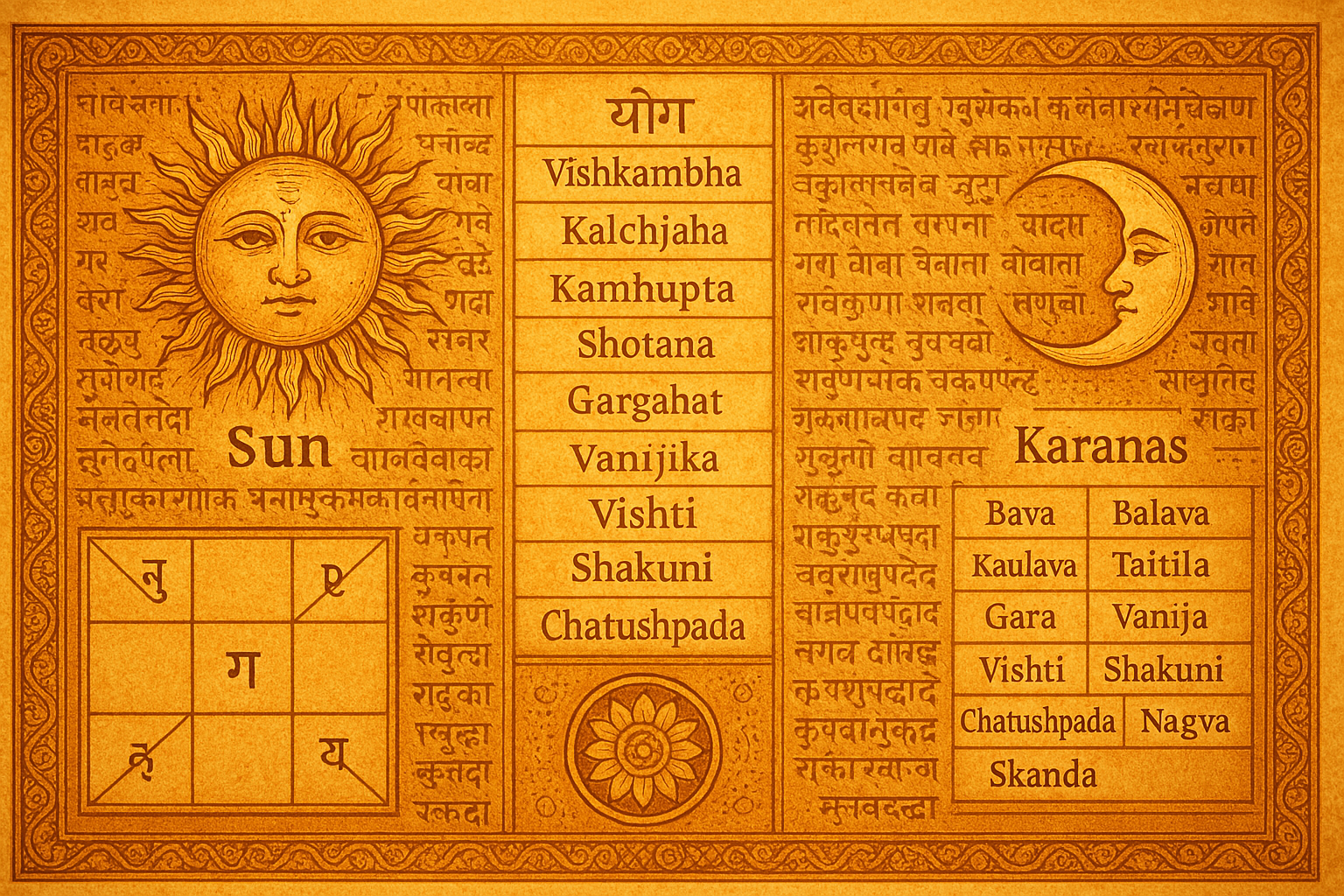
Understanding Yoga's and Keranas: Unveiling the Foundations of Vedic Timekeeping
| In the intricate system of Vedic astrology and the Hindu Panchang (calendar), Yogas and Karanas play vital roles in determining the quality of time and the energies influencing events. While often overshadowed by Tithis and Nakshatras, Yogas and Karanas are essential building blocks of Muhurta (auspicious timing). Yogas, in this context, refer to one of the five limbs (Panchanga) and are based on the sum of the longitudes of the Sun and Moon. There are 27 Yogas (some traditions use 27, others 27 + 1 Abhijit), and each Yoga represents a certain quality of time, influencing human behavior, emotional tone, and the outcomes of activities. Examples include Vishkumbha (obstacles), Siddhi (success), and Dhriti (steadiness). Each Yoga has unique characteristics and is either auspicious (Shubha) or inauspicious (Ashubha). On the other hand, Karanas are half of a Tithi. Each Tithi has two Karanas, and there are 11 Karanas in total—4 fixed (Sthira) and 7 recurring (Chara). Fixed Karanas like Shakuni, Chatushpada, Naga, and Kimstughna occur once in a lunar month, while the 7 movable Karanas rotate in a predictable pattern. Karanas influence the type of actions that are best suited for that time. For example, Bava is considered good for beginnings, while Vishti (Bhadra) is traditionally avoided for auspicious tasks. Understanding Yogas and Karanas can help us align our daily actions and decisions with cosmic rhythms, promoting success and harmony. Astrologers use them while selecting Muhurta for activities like marriage, travel, construction, and spiritual practices. In modern life, where ancient wisdom often gets overshadowed, recognizing the deeper layers of time measurement can offer insight and spiritual alignment. This article explores all 27 Yogas and 11 Karanas in detail, their meanings, and when they occur. By the end, you’ll understand how to interpret their significance and apply them practically in your own life. |
| Image Prompt | A |
